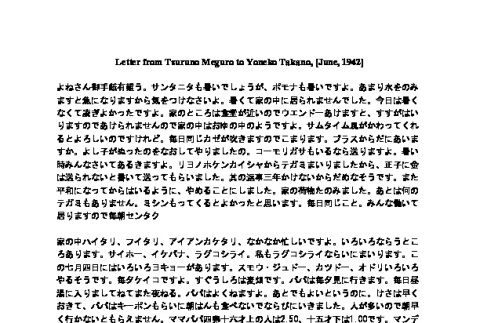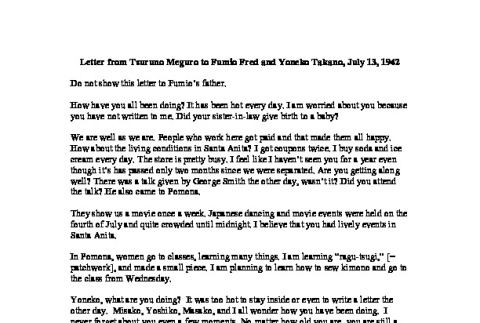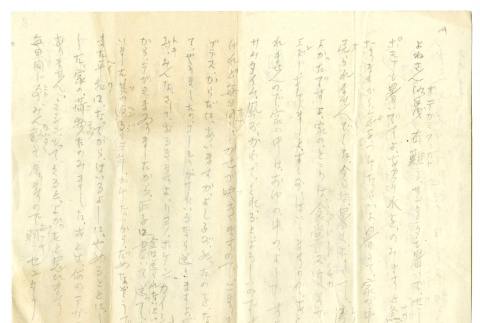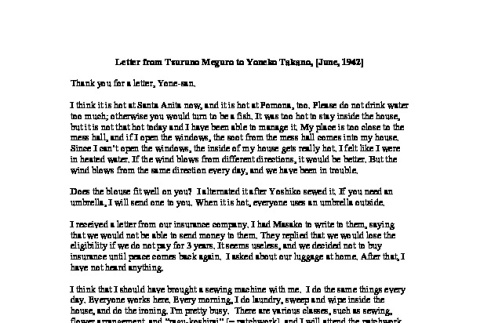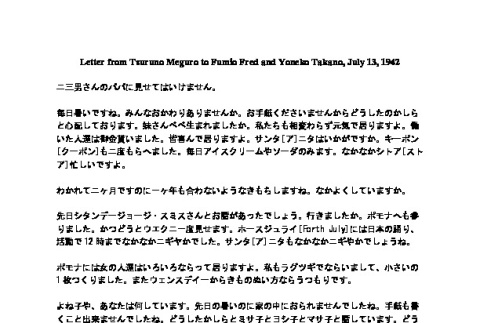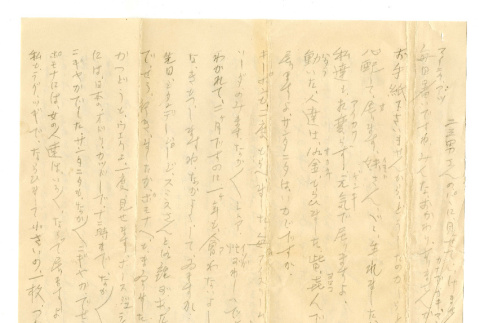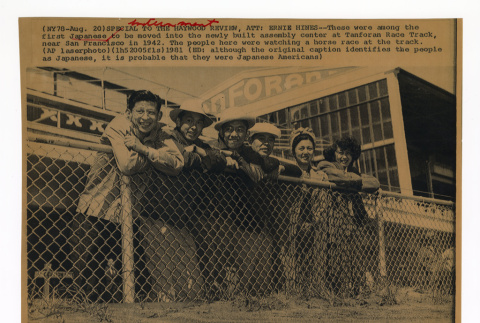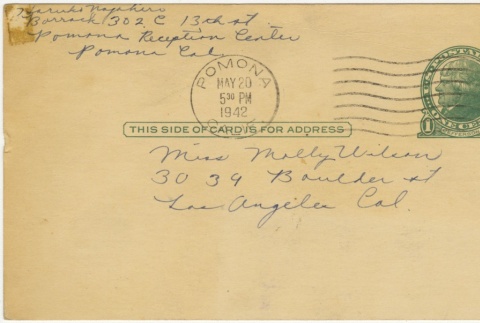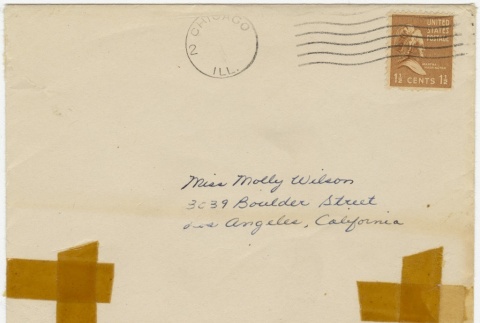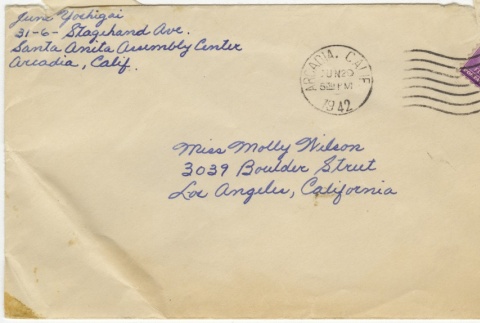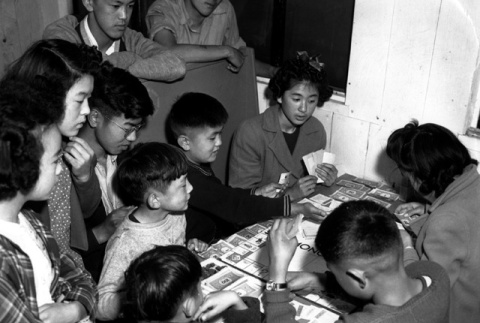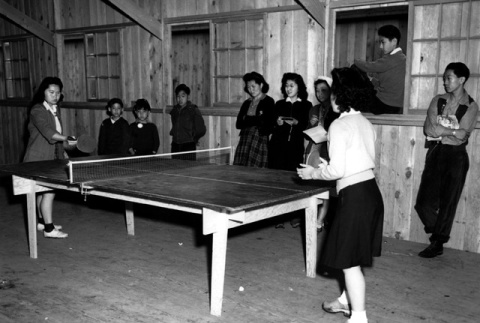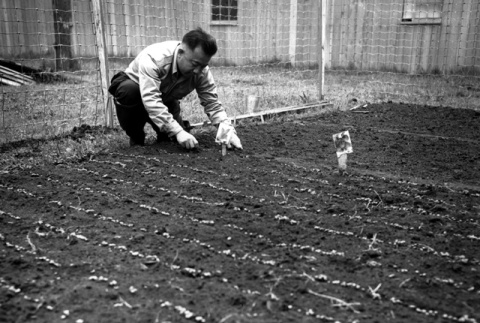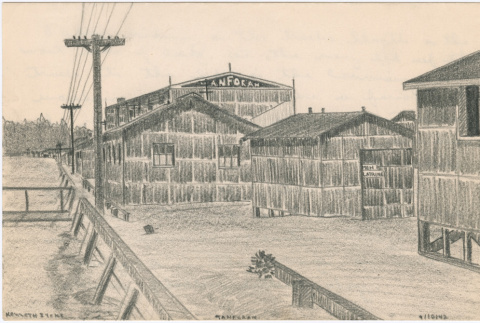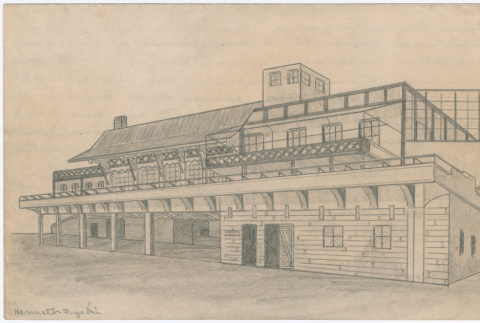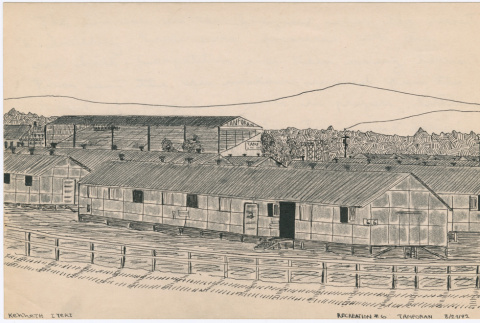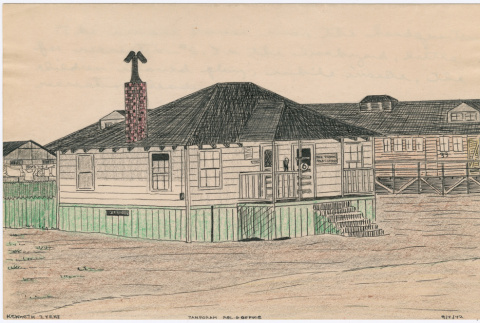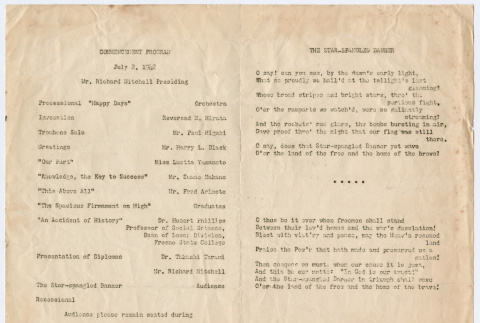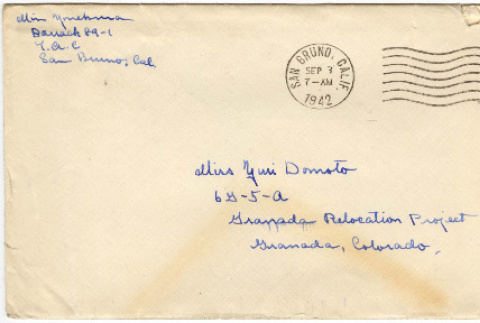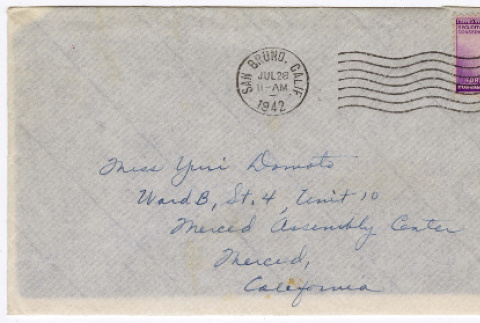Social and recreational activities
Despite deplorable living conditions at the "assembly centers," camp inmates tried to make the best of it by organizing various social and recreational activities. Japanese Americans participated in dances and musical groups; sports and gardening were also popular.
World War II
(231)
Temporary Assembly Centers
(231)
Social and recreational activities
(93)
93 items
93 items
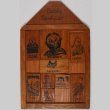
img
Free the Prisoner board game and instructions (ddr-densho-452-1)
Game was crafted in the Portland Assembly Center for the camp director's son, Robert "Bobby" Sandquist. The "Father" piece is missing from the game.
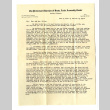
doc
Letter from the Suzuki's to Rev. and Mrs. Miller, circa 1942 (ddr-csujad-20-13)
Letter from the Suzuki's to Rev. and Mrs. Miller regarding recent happenings at the Santa Anita Assembly Center. See this object in the California State Universities Japanese American Digitization project site: WLM_01-46_14
![Letter from Lester Suzuki to Brother [Wendell L.] Miller, May 4, 1942 (ddr-csujad-20-3)](https://ddr.densho.org/media/cache/ba/a9/baa95644ece51dbe7ffca89e00ac3476.jpg)
doc
Letter from Lester Suzuki to Brother [Wendell L.] Miller, May 4, 1942 (ddr-csujad-20-3)
Personal letter written from the Santa Anita Temporary Assembly Center and describing early days there, including lack of regular work and schooling schedules and of appropriate food for children; scouts and boys' clubs being in development; religious services on Sundays attracting nearly 2000 people; and the need to wait for community facilities such as laundry and …
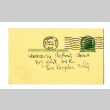
doc
Letter from George K. Sakai, 1942 May 4 (ddr-csujad-20-14)
Letter from George Sakai to United Methodist Church regarding address information for a mutual friend. See this object in the California State Universities Japanese American Digitization project site: WLM_01-46_13
![Letter from Henry [Katsumi] Fujita to Mr. H. A. Strong, Electrolux Corporation, August 9, 1942 (ddr-csujad-23-13)](https://ddr.densho.org/media/cache/14/24/142413aac9733a9c7ff730c050eb232e.jpg)
doc
Letter from Henry [Katsumi] Fujita to Mr. H. A. Strong, Electrolux Corporation, August 9, 1942 (ddr-csujad-23-13)
Letter from Henry K. Fujita to his boss Mr. H. A. Strong of the Electrolux Corporation in San Francisco dated August 9, 1942. Rich in details, the letter describes the physical layout of the Merced Assembly Center, the poor-quality construction of the barracks, the daily schedules, the camp organization and facilities, the hardships and illnesses and …
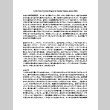
doc
Letter from Tsuruno Meguro to Yoneko Takano, June 1942, Japanese typescript (ddr-csujad-42-52)
Japanese typescript of the letter: csudh_tak_0050. See this object in the California State Universities Japanese American Digitization project site: tak_01_28_001_jpn
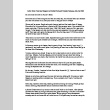
doc
Letter from Tsuruno Meguro to Fumio Fred and Yoneko Takano, July 13, 1942, English translation (ddr-csujad-42-54)
English translation of the letter: csudh_tak_0053. See this object in the California State Universities Japanese American Digitization project site: tak_01_29_001_eng
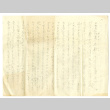
doc
Letter from Tsuruno Meguro to Yoneko Takano, June, 1942 (ddr-csujad-42-50)
A letter from Tsuruno Meguro in the Pomona Assembly Center to her daughter, Yoneko Takano in the Santa Anita Assembly Center. In the letter, Tsuruno describes the lives and conditions in the camp, including the hot weather, classes and entertainment, church, allowance and wages, and other incarcerees who she met in the camp. She writes about …
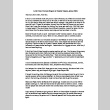
doc
Letter from Tsuruno Meguro to Yoneko Takano, June 1942, English translation (ddr-csujad-42-51)
English translation of the letter: csudh_tak_0050. See this object in the California State Universities Japanese American Digitization project site: tak_01_28_001_eng
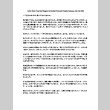
doc
Letter from Tsuruno Meguro to Fumio Fred and Yoneko Takano, July 13, 1942, typescript (ddr-csujad-42-55)
Japanese typescript of the letter: csudh_tak_0053. See this object in the California State Universities Japanese American Digitization project site: tak_01_29_001_jpn
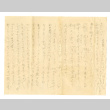
doc
Letter from Tsuruno Meguro to Fumio Fred and Yoneko Takano, July 13, 1942 (ddr-csujad-42-53)
A letter from Tsuruno Meguro in the Pomona Assembly Center to her son-in-law and daughter, Fumio Fred and Yoneko Takano in the Santa Anita Assembly Center. In the letter, she describes the lives in the assembly center, including her daily routine. English translation is found in item: csudh_tak_0054. Typescript is found in item: csudh_tak_0055. See this …
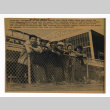
img
Some of the first arrivals to the assembly center at Tanforan Race Track, near San Francisco in 1942 (ddr-csujad-52-4)
A LaserPhoto copy of an Associated Press image, taken in 1942, shared in 1981. Caption on photo reads "These were among the first Japanese to be moved into the newly built assembly center at Tranforan Race Track, near San Francisco in 1942. The people here were watching a horse race at the track." A message from …
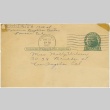
doc
Postcard to Molly Wilson from Haruko Nagahiro (May 20, 1942) (ddr-janm-1-53)
Postcard to Molly Wilson from Haruko Nagahiro (May 20, 1942). It is postmarked May 20, 1942 from the Pomona Assembly Center in Pomona, California.
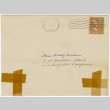
doc
Letter (with envelope) to Molly Wilson from June Yoshigai (May 30, 1942) (ddr-janm-1-84)
Handwritten letter to Molly Wilson from June Yoshigai (May 30, 1942). Envelope is postmarked but does not give a date from Chicago, Illinois.
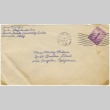
doc
Letter (with envelope) to Molly Wilson from June Yoshigai (June 26, 1942) (ddr-janm-1-85)
Handwritten letter to Molly Wilson from June Yoshigai (June 26, 1942). Envelope is postmarked June 29, 1942 from the Santa Anita Assembly Center in Arcadia, California.
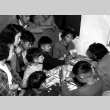
img
Group playing Monopoly (ddr-densho-36-38)
Japanese Americans did their best to lead normal lives in the Puyallup Assembly Center. They cultivated gardens, engaged in different types of activities, and played games such as Monopoly.
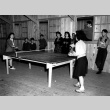
img
Group playing Ping-Pong (ddr-densho-36-37)
Japanese Americans made every effort to lead normal lives in the Puyallup Assembly Center. They cultivated gardens, engaged in different types of activities, and played games such as ping-pong.
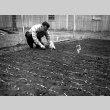
img
Japanese American gardening (ddr-densho-36-35)
Japanese Americans tried hard to make life at the assembly center bearable. Here, a camp inmate tends to a garden.
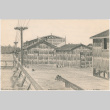
doc
Drawing of the latrine and barracks at Tanforan Assembly Center (ddr-densho-392-8)
Caption by Kenneth Iyeki: "A scene midway on the track length on the west side of camp. At the very end of the track to the left is the commisary warehouse. The rails were a favorite of youngsters. They would boast of having walked such and such a distance. Never heard of anyone balancing his way …
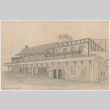
doc
Drawing of the social hall at Tanforan Assembly Center (ddr-densho-392-11)
Caption written by Kenneth Iyeki: "This structure in Tanforan served many purposes. It is adjacent to the huge grandstand and tangent by a stairway. Upstairs in the hall, the internees held dances, badminton, and it was used as a place where visitors could come and see their evacuated friends. The ground level which is under the …
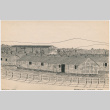
doc
Drawing of recreation hall #6 at Tanforan Assembly Center (ddr-densho-392-16)
Caption written by Kenneth Iyeki: "The barrack in the foreground was the recreation #6 building. Each area possessed its own rec hall. Competition was keen among them. From out the open window would [?] the sound of ping pong games in progress, little children screaming in laughter or just screaming, girls daring the boys to a …
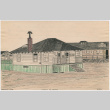
doc
Drawing of recreation hall #6 headquarters at Tanforan Assembly Center (ddr-densho-392-18)
Caption written by Kenneth Iyeki: "The small house was the headquarters for recreation #6. In the backyard, little children would play, while inside, the recreation leaders."
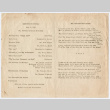
doc
Merced Commencement Program (ddr-densho-356-775)
Program for a Commencement ceremony at Merced Assembly Center.
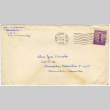
doc
Two letters to Yuri from Min Yonekura (ddr-densho-356-285)
Two letters to Yuriko Domoto Tsukada from Minoru "Min" Yonekura. Both letters stored in one envelope, unclear if they were mailed together or separately. Letter 5/11: describes forced removal, details items needed in assembly center to make barracks feel homey, food quality in the assembly center and general life there. Letter 2: discusses plans to move …
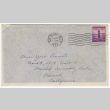
doc
Letter to Yuri Domoto from Margaret Saito (ddr-densho-356-291)
Letter to Yuri Domoto from Margaret Saito in which she details life in Tanforan, asks Yuri to keep in touch once she is moved from Merced, and describes her desire to move East and find a job in which she is getting help from a former boss. Item tied together with all objects between ddr-densho-356-277 and …
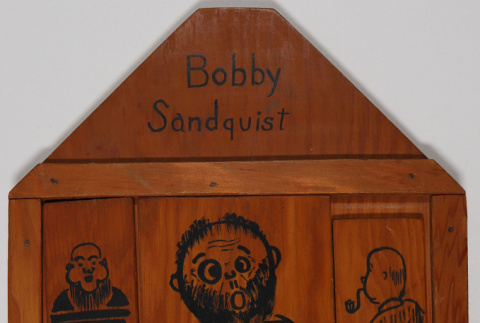
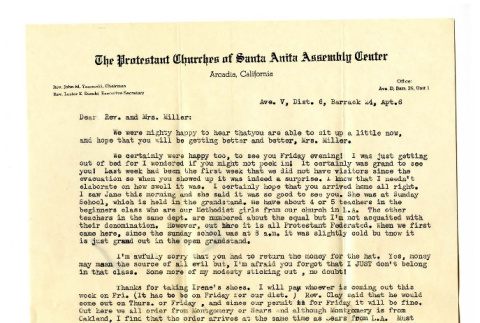
![Letter from Lester Suzuki to Brother [Wendell L.] Miller, May 4, 1942 (ddr-csujad-20-3)](https://ddr.densho.org/media/cache/d2/cd/d2cd215efd514a4c2fa46072d3f29adb.jpg)
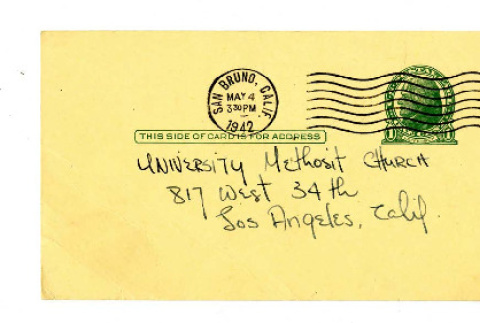
![Letter from Henry [Katsumi] Fujita to Mr. H. A. Strong, Electrolux Corporation, August 9, 1942 (ddr-csujad-23-13)](https://ddr.densho.org/media/cache/d2/af/d2afd33bc388bbb92c1d2865f7c443a8.jpg)
